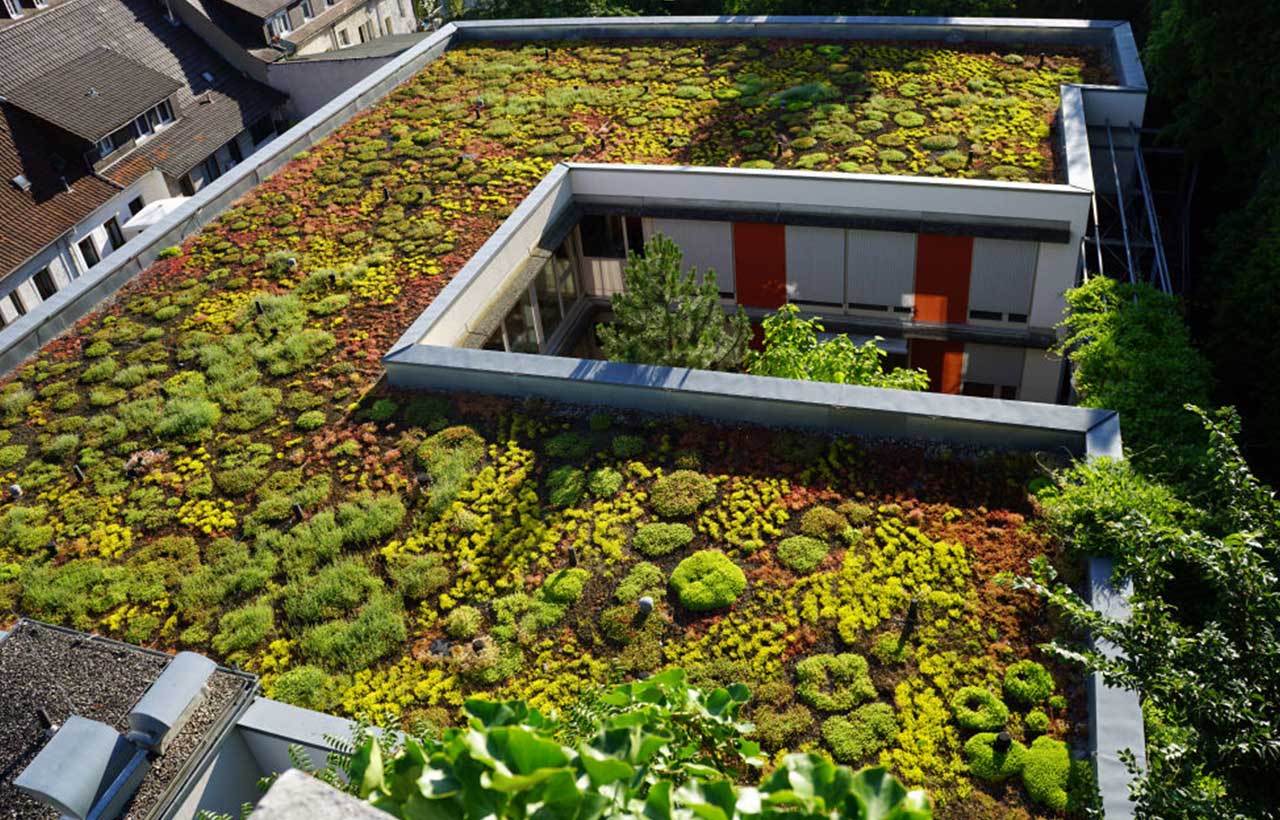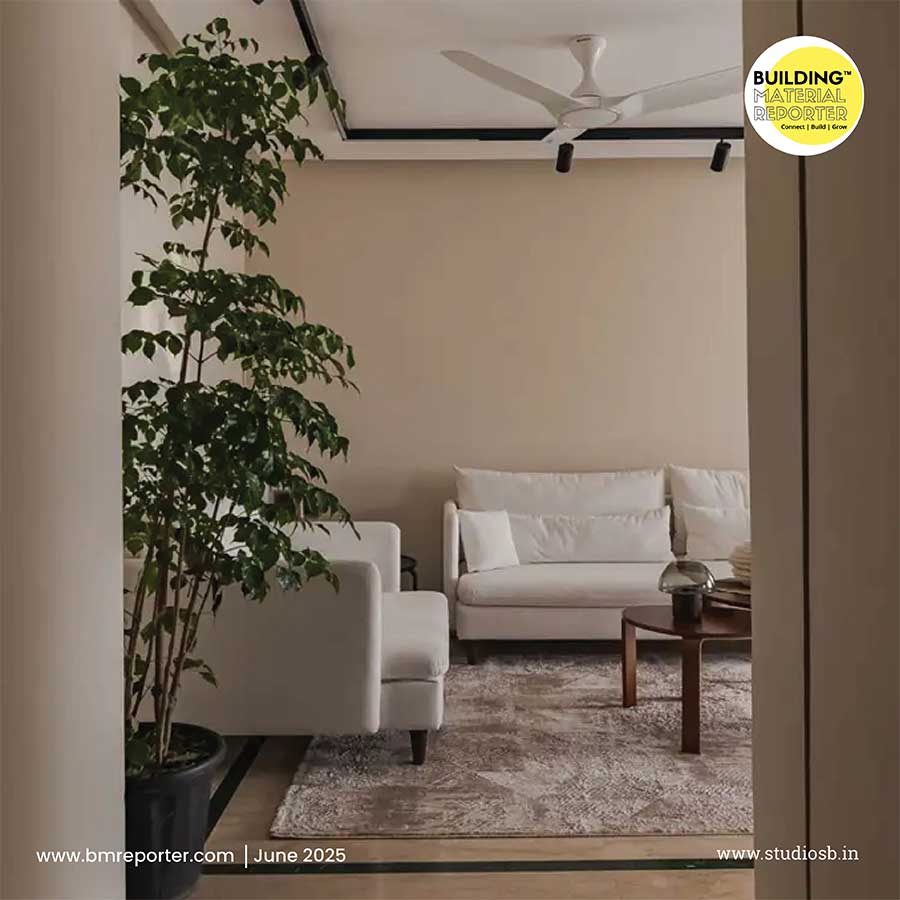Exploring Different Types of Roofing Materials in an Indian Context
- October 10, 2024
- By: Ar. Priyanshi Shah
- INFLUENCERS

Introduction to Roofing Materials: Why Choice Matters
The roof is an architectural element that shields from climate so it becomes essential to choose the perfect roofing materials for a home or any structure as an investment for decades. Beyond protection, it also adds value to the structure, energy efficiency and design aesthetics. Choosing the right roofing material is not just about aesthetics but also the accurate preference without leaks, damage and long-term expense. In this Building Material Reporter Research article, we will guide you through the various roofing options that will keep your house safe for years. Ready to explore the domain of roofing materials and how they contribute to the aesthetics of your home?
Types of Roofing
 1. Asphalt Shingles- Affordable and Versatile: The most typical roofing material, asphalt shingles can be strengthened with fibreglass or organic materials to resist any climatic conditions due to their durability. It's easy to install and if one shingle is damaged it can be replaced easily without modifying the entire roof.
1. Asphalt Shingles- Affordable and Versatile: The most typical roofing material, asphalt shingles can be strengthened with fibreglass or organic materials to resist any climatic conditions due to their durability. It's easy to install and if one shingle is damaged it can be replaced easily without modifying the entire roof.
 2. Metal Roofing- Durable and Energy-Efficient: Metal roofing with minimum maintenance and cost-effective techniques is a durable and versatile option that offers protection against heavy rainfall, wind or extreme heat. Metal roofs reflect sunlight and keep the space cool reducing air conditioning costs. Available in various colours, and styles, they are eco-friendly as made from recycled materials and recycled at the end of their life fostering sustainable principles.
2. Metal Roofing- Durable and Energy-Efficient: Metal roofing with minimum maintenance and cost-effective techniques is a durable and versatile option that offers protection against heavy rainfall, wind or extreme heat. Metal roofs reflect sunlight and keep the space cool reducing air conditioning costs. Available in various colours, and styles, they are eco-friendly as made from recycled materials and recycled at the end of their life fostering sustainable principles.

3. Clay and Concrete Tiles- Traditional and Long-Lasting: With a lifespan of more than 50 years, clay and concrete tiles are widely used in architecture and interior decor with their fire-resistant and energy-efficient properties creating an enchanting impression in various forms, sizes and colourings. It keeps the home cooler in summer and warmer in winter due to its excellent thermal insulation aspects reducing the general energy cost. They are made from eco-friendly and recycled materials, an ideal and sustainable choice for roofs.
 4. Slate Roofing- Premium and Timeless: Slate roofing is a timeless choice whether you have a vintage villa or modern structure, as it adds value and charm to the design. Available in greys, purple and green it adds vibrancy to the building and each tile becomes the symbol of luxury enriched in natural patterns. It is weather resistant with 100 years of long-lasting durability and the safest roofing material. The initial cost of the slate roofing is higher but it requires less maintenance.
4. Slate Roofing- Premium and Timeless: Slate roofing is a timeless choice whether you have a vintage villa or modern structure, as it adds value and charm to the design. Available in greys, purple and green it adds vibrancy to the building and each tile becomes the symbol of luxury enriched in natural patterns. It is weather resistant with 100 years of long-lasting durability and the safest roofing material. The initial cost of the slate roofing is higher but it requires less maintenance.
 5. Synthetic Roofing Materials- Modern Alternatives: Synthetic roofing materials are alternatives to traditional options of slate, clay or asphalt. These are modern materials such as rubber or composite recycled light in character and rich in aesthetics.
5. Synthetic Roofing Materials- Modern Alternatives: Synthetic roofing materials are alternatives to traditional options of slate, clay or asphalt. These are modern materials such as rubber or composite recycled light in character and rich in aesthetics.
 6. Green Roofing- Eco-Friendly and Sustainable Options: Promoting green roofs, and urban forests enhances the concept of Sustainability. Green roofing is a newly adopted technique to grow vegetative cover on the roof which includes trees and bushes, forming a biodiversity, and improving air quality and standard of living. Living roofs echo daylight and improve the building’s liveliness.
6. Green Roofing- Eco-Friendly and Sustainable Options: Promoting green roofs, and urban forests enhances the concept of Sustainability. Green roofing is a newly adopted technique to grow vegetative cover on the roof which includes trees and bushes, forming a biodiversity, and improving air quality and standard of living. Living roofs echo daylight and improve the building’s liveliness.
Factors to Consider When Choosing Roofing Materials
Here are listed a few factors that will guide one in choosing roofing material from a variety of options.
Environmental Condition: The climate is one of the important factors that contribute to safety, and choosing roofing materials for extreme weather conditions prevents roof damage.
- For areas with high temperatures, choose roofing materials that reflect the sun such as metal roofs or clay tiles that will reduce the cost and heat.
- For wet or cold areas, select roofing materials that are resistant to rainfall or snow such as slate, or asphalt shingles that shed the water or snow easily.
- For windy areas, prefer roofing materials that can withstand storms such as concrete tiles or metal roofs.
Durability: The long-lasting roofing material can affect the cost but can save money by reducing the need for repairs. Slate and metal roofing materials are used that last over more than 100 years while with strong supports clay and concrete roofing can stay for 50 years.
Beauty and Aesthetic: Appearance of the roofing tile plays a significant role and choosing the right roofing material can enhance the design style. With property guidance from the professional and the look of the building, choose what suits best for your home. Wood shingles give a rustic look while slate or clay provides an earthy and luxurious appearance. Asphalt shingles are traditional roofing materials with a variety of colours while synthetic roofing materials are affordable and enhance the aesthetic appeal.
Installation and Weight: The weight of the roofing material affects the structural integrity of the structure. The installation of roofing materials directs special skills or labour and it might affect the initial costs.
Environmental Influence: Green roofs or living roofs, recycled materials and eco-friendly tiles impact the environment, reducing heat and enhancing air quality. Natural materials are durable and affordable, while cool roofs blend vegetation and water elements to enhance the structure's interior aesthetics.
Maintenance Tips for Various Roofing Types
Here are some instructions and techniques for improving the life span of the roofing materials
- Check for damaged tile or shingles, especially after any climatic condition.
- The stored water damages the roofing tile, so keep gutters clean and free from debris.
- For metal roofing, look for rust or loose screws or fasteners, as it can affect the structure.
- For aesthetic purposes, paint the tile or roof after a few years of installation to prevent corrosion and shrinkage.
- Inspect tile or broken fragments, especially in tile roofs and replace them.
- Hire a professional or labour for repairs as roofing tiles are fragile and need special care.
Conclusion
Considering various factors such as durability, aesthetics, eco-friendly construction material, energy efficiency and sustainability, finding the best roofing material from an array of brands seems difficult for homeowners. A roof is visible from the street and it enhances the look of the structure protecting it from rain, sun and snow with minimum maintenance. Here with our research and finding the right professional one can pick the perfect roofing material without any hustle and bustle.
Frequently Asked Questions (FAQs)
What are the most common types of roofing materials, and what are their benefits?
Each roofing material has its pros and cons. The affordability, initial cost of installation, maintenance and durability govern the type of roofing material for your home. Asphalt shingles, clay tile, solar roofs, terracotta, green roofs or cool roofs are widely used roofing materials.
How do I choose the best roofing material for my home?
Budget and Aesthetics are primary aspects that govern the choice of roofing material. The maintenance cost and long-term installation are minor factors to be considered. Always hire a professional for installation to avoid any damages or links.
What are the cost implications of different roofing materials?
Asphalt shingles roofing is popular with minimum installation cost and proper guidance. It can last for 10-15 years. Clay tile roofing has a higher installation cost but it lasts for 50-100 years. Concrete tiles are heavy to install, lasting 25-45 years.








